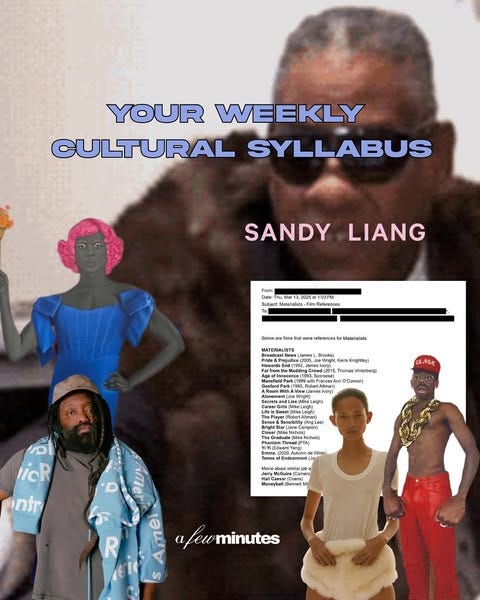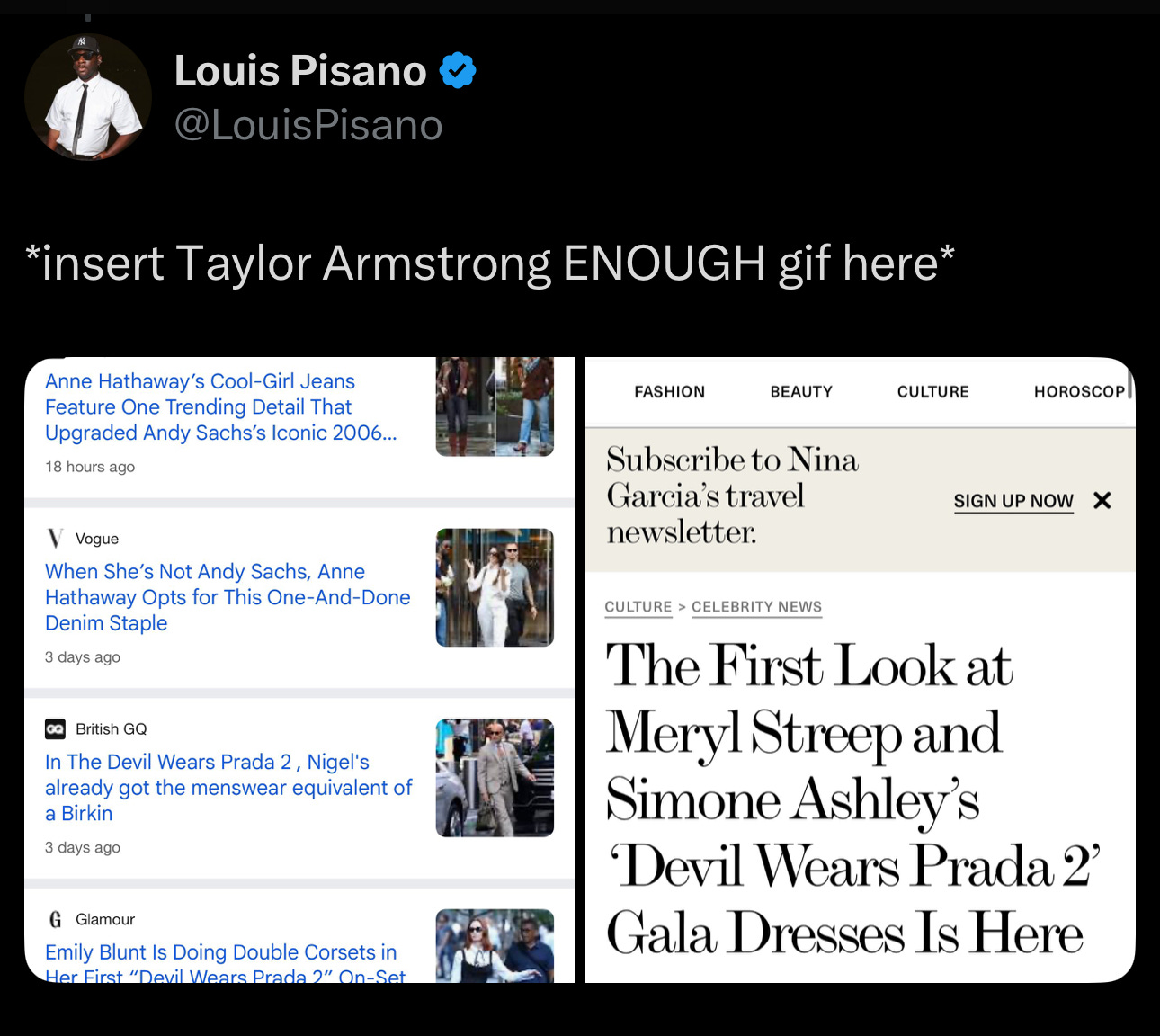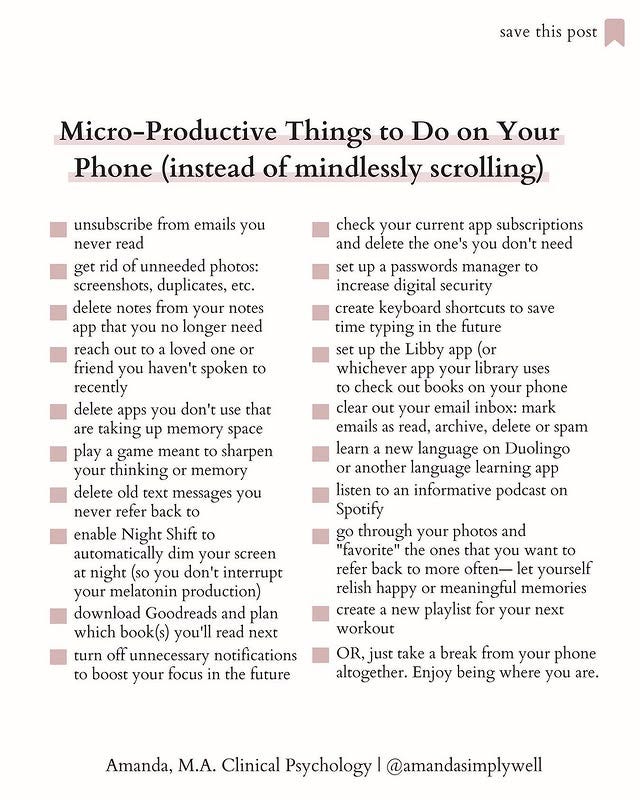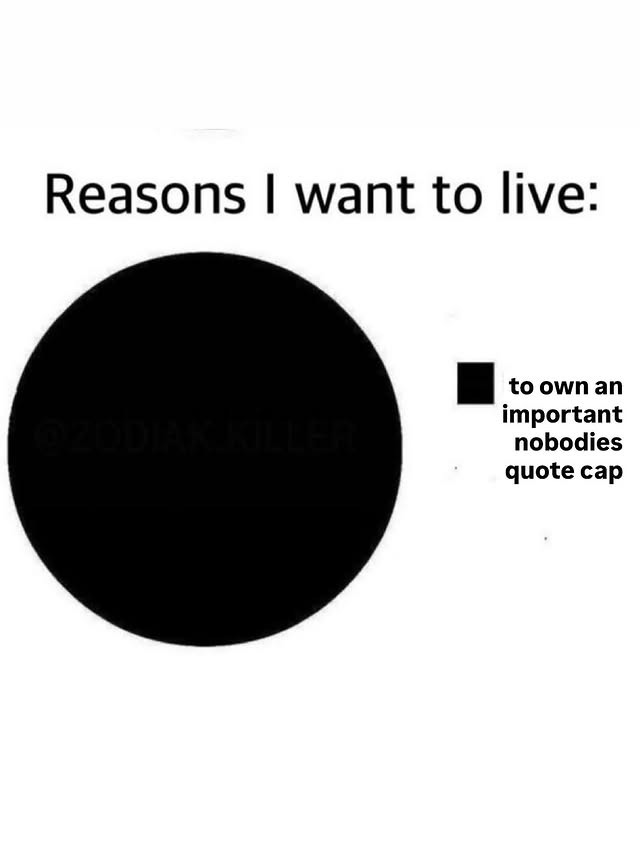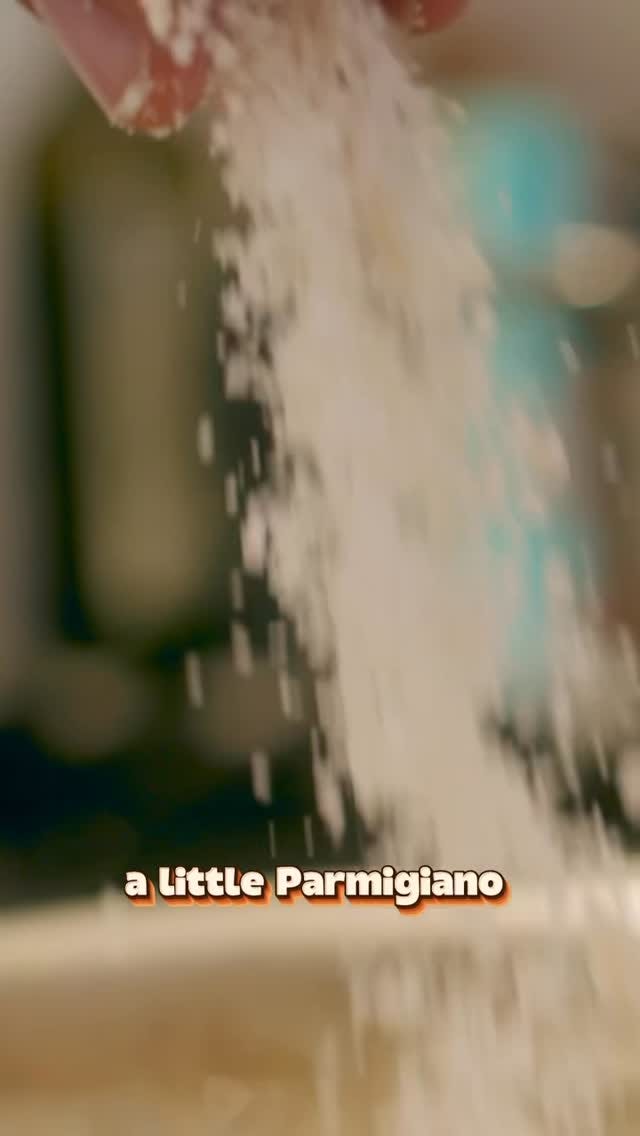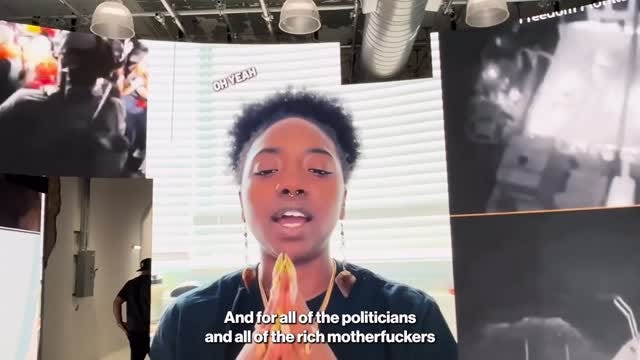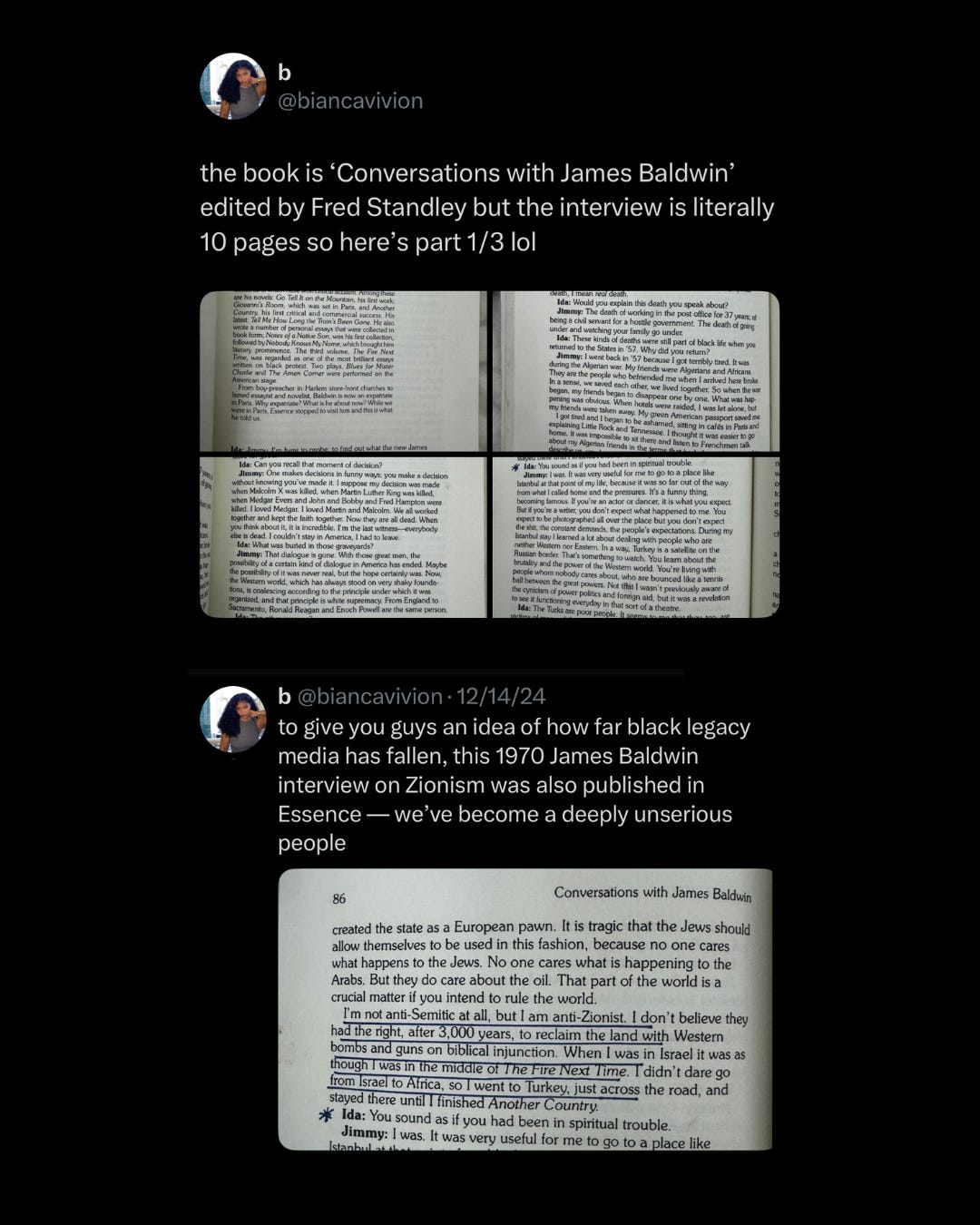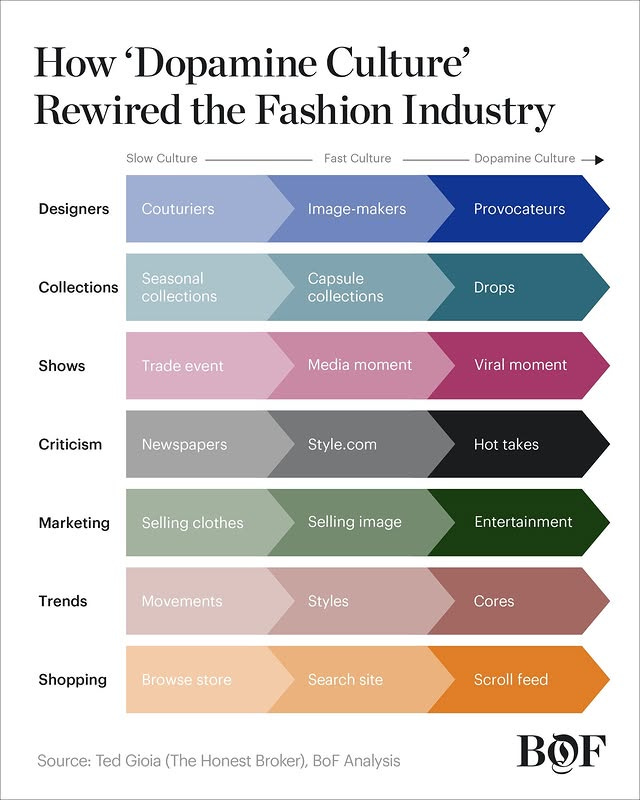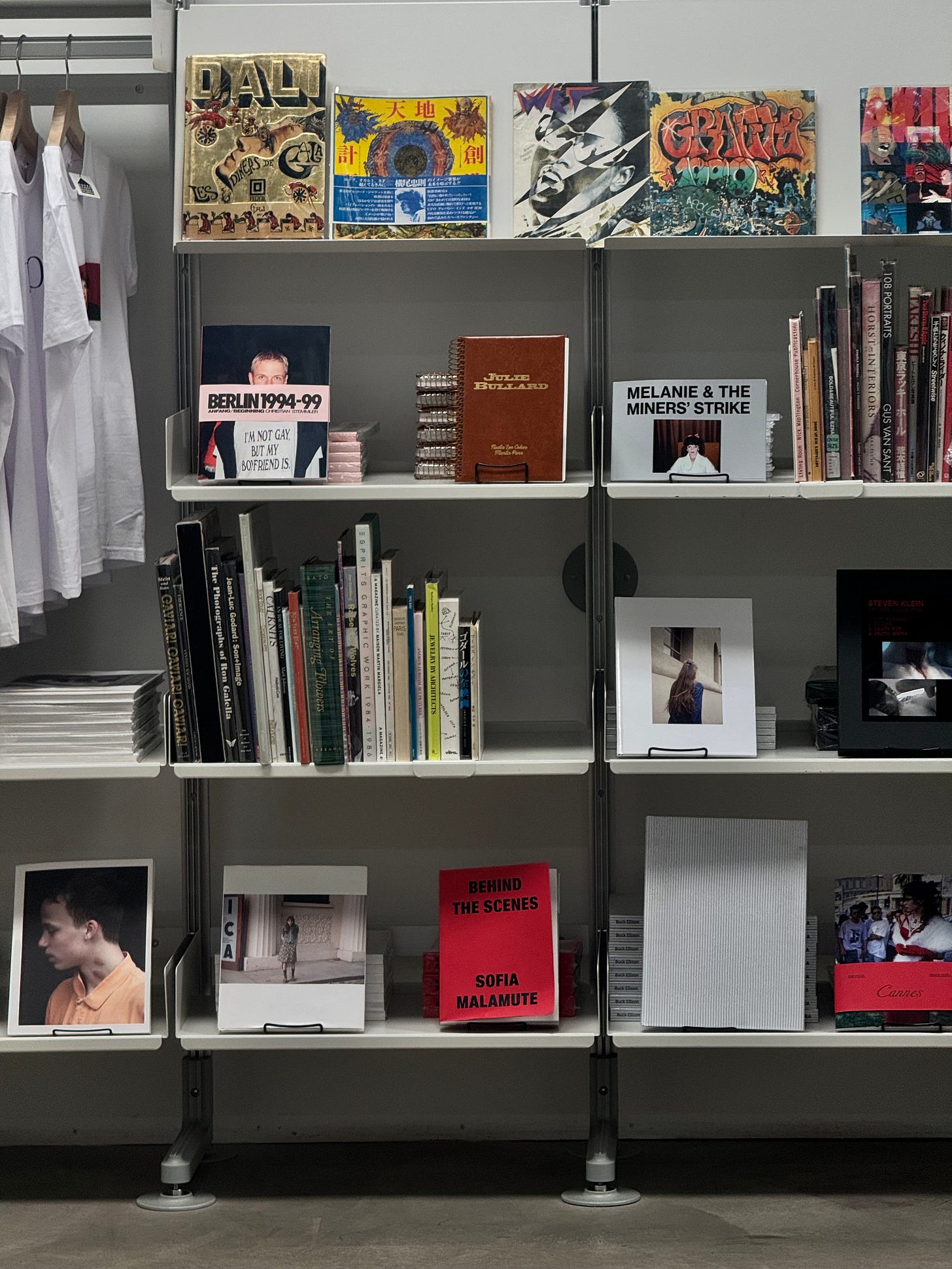a few minutes, vol. 56 — the myth of volume
A few words on the shift from volume to curation, summer reading culture, and why accumulation isn't the same as engagement, plus the usual articles and links.
Hi friends + subscribers, welcome back to A Few Minutes: your weekly syllabus for thinking through culture's big and small moments.
Last week, I wrote about the cultural syllabus—how everything is either a reference or will be referenced, and the beauty lies in understanding those connections and recognizing that all artists have once been students.
Fitting enough, I found myself at Hauser & Wirth this week viewing "Sometimes a straight line has to be crooked," an exhibition that puts Henry Taylor's work in direct conversation with his teacher, California modernist James Jarvaise. The show spans over seven decades, but what strikes me most is how it embodies exactly what a cultural syllabus looks like in practice—the visible thread between mentor and student, influence and evolution.
Walking through the gallery, I noticed something unsettling—eyes following me no matter where I moved. At first, I thought I was tired or paranoid, but the gallery attendant confirmed what I was experiencing. Sure, all paintings have eyes that seem to follow you, but here I felt a real tension between watching and being watched.
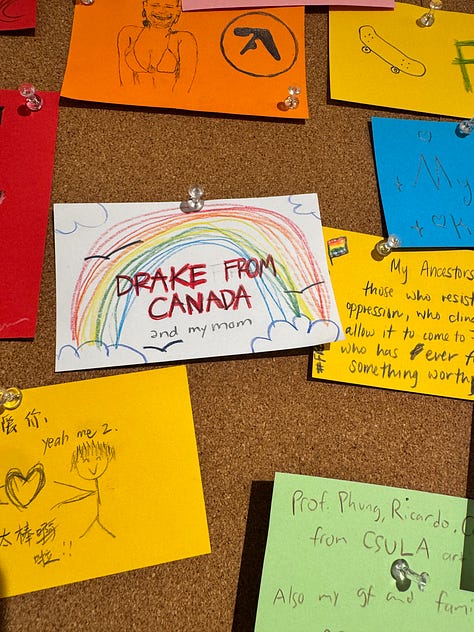
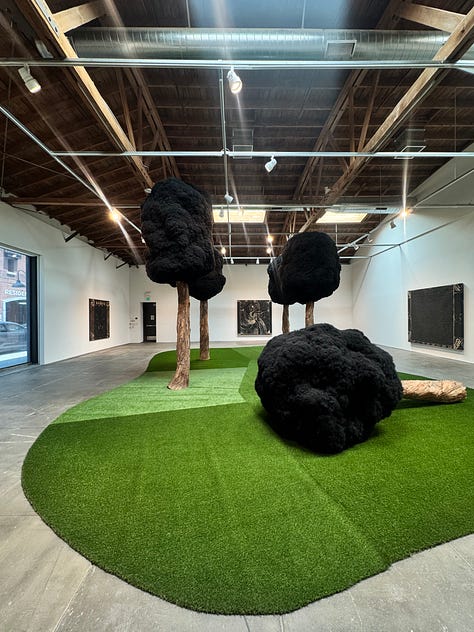
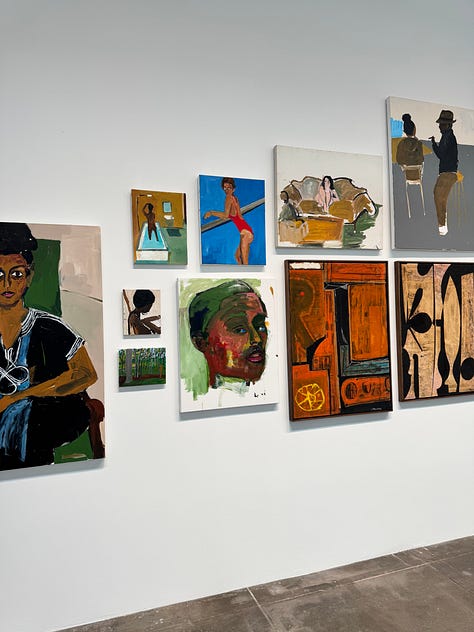
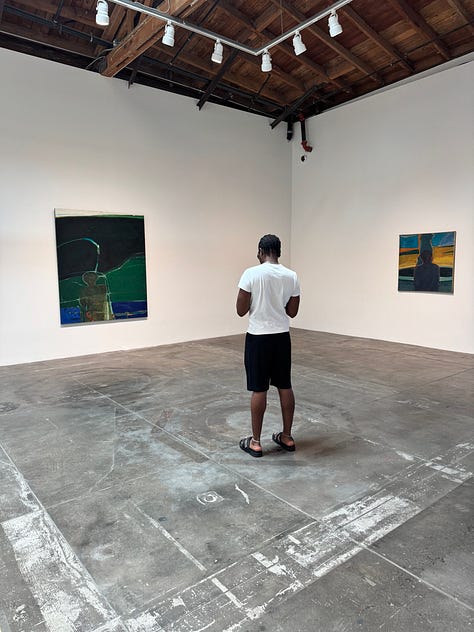
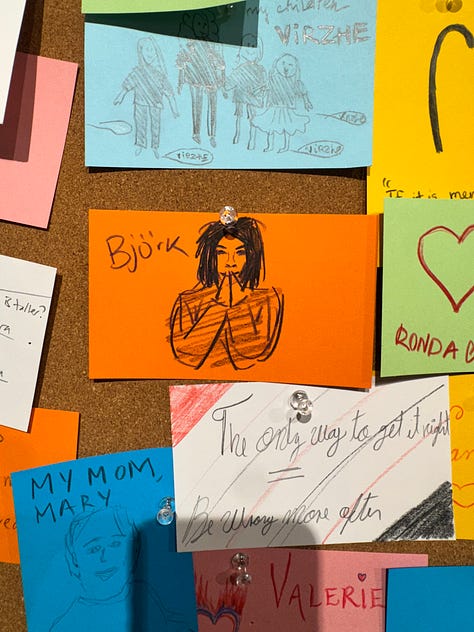
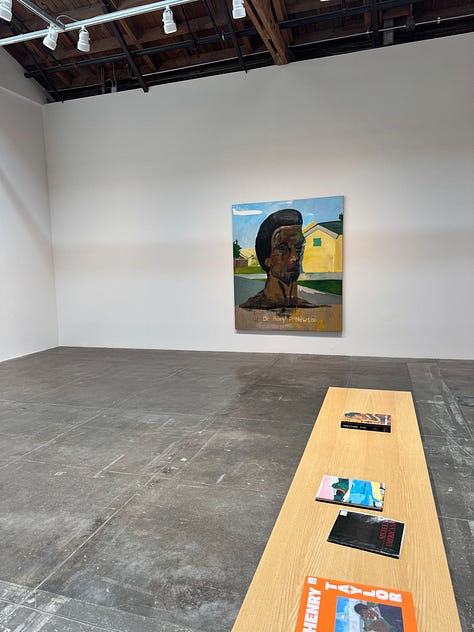
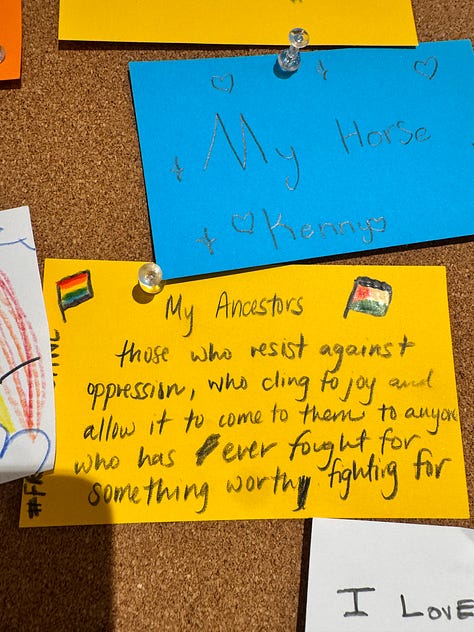
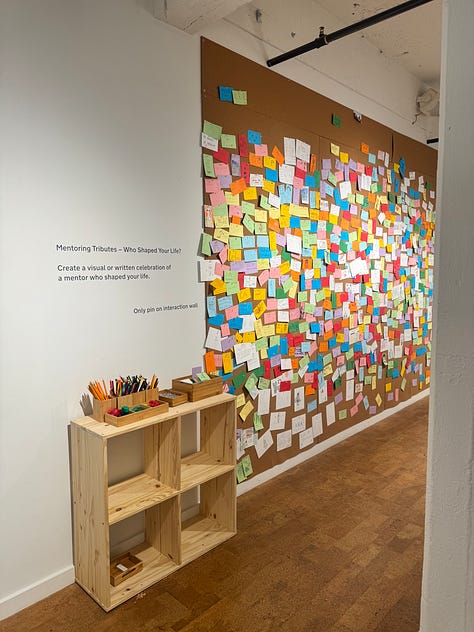
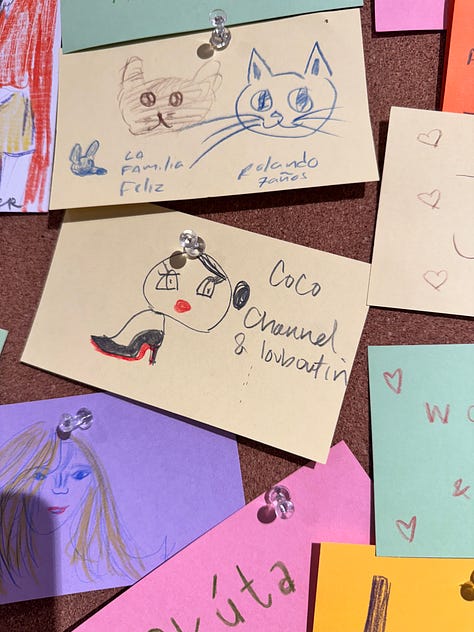
Jarvaise's "Untitled (Man in the Room)" shows a figure with an averted gaze, looking into some distant space we can't access. But Taylor's subjects are positioned differently—their eyes somehow track wherever you move in the space. His portraits carry the weight of the Black American experience, turning the act of looking into something loaded with history and presence.
It's visual proof that creativity truly is "communication with the past, not spontaneous combustion." Seeing their work together shows how Taylor transformed his teacher's explorations into something entirely his own.
I stopped by the kids' interactive section (one of my favorite parts of any museum, even though I'm way past the target age). The exhibition carried its theme of influence and reference even there, with a prompt asking 'who shaped your life.' Seeing all those responses reminded me that we're all building our own cultural syllabi from day one.
Speaking of cultural syllabi, here's what you should be reading.
This Week’s Required Reading
Is Paparazzi ruining the movies? I think yes (Vogue)
My anathema for what paparazzi, social media, and first-look reporting are doing to The Devil Wears Prada sequel can only really be expressed through memes and screenshots.
But to say it plainly: I want to be surprised by this movie. And I guess for that to happen, I have to stay off social media—not even because of spoilers, but because the mystique is already being chipped away.
Nightgowns are the next big thing in leisure (CNN)
Our underwear—our most intimate garments—are suddenly everywhere. Sheer is in. Personally, I love a sheer top with a black bra underneath. Mini shorts and bloomers have taken over the past two summers. And now, the nightgown feels like the next chapter.
Worn as an everyday dress or paired with jeans, the nightgown has floated from the bedroom into the public eye. I see it as a cousin—not a twin—to shapewear-as-daywear. Think SKIMS, but softer. Where shapewear smooths and sculpts, the nightgown billows. It doesn’t contour the body so much as it outlines a mood. It’s sheer, yes, and often sexy, but it also carries a kind of romance. A looseness. It feels less about exposure, more about ease.
CNN asked if this trend signals a swing back toward conservative values—if our return to delicate slips and modest silhouettes is somehow political. These days, everything is either a recession indicator or an echo of post-Trump America. But I’d offer a secret third thing: maybe we’re just burnt out on leisurewear and looking for new ways to punctuate comfort outside the home.
Kendrick and Dave Free started a creative agency. Meet pgLang’s baby cousin: Project 3 (AdWeek)
The Studio’s Chase Sui Wonders stars as a neurotic creative exec in the teaser for Project 3, a new global creative agency from Kendrick Lamar and Dave Free, positioned to help build brands externally. Something they’ve always done well—maybe best—is the short film format. I still think about pgLang’s 2021 Calvin Klein campaign—the one featuring Baby Keem, Jorge Smith, Yara Shahidi, and my favorite: Ryann, Destiny, and Keith Powers. You can read about it here, since the videos have been scrubbed from the brand’s YouTube page.
Aesthetically, it was great—they chose artists and tastemakers who felt right for that moment in 2021 when we were all stuck in the house, craving visuals that reflected being home, how our closets had turned to athleisure. pgLang delivered on that front. But it didn't tell a story, at least not one I could follow. Sometimes I get tired of beautifully shot brand films that aren't building toward anything, the ones that prioritize mood over narrative structure, skipping the beginning, middle, and end entirely.
That’s why the name Project 3 feels promising. The name itself hints at more storytelling, aka the three-act structure. And from the teaser—Chase, Lionel Boyce (of The Bear and Odd Future), the anxious tone—it seems like they’re leaning into something more narrative, more unsettled.
It also made me wonder about GILGA, Donald Glover’s production venture. In 2023, he told GQ that one of the first releases would be a short film with Malia Obama. We haven’t seen it yet. It feels like we’re due.
And personally? I’m a little collab-fatigued. I know a creative agency isn’t the same thing, but I keep thinking back to that pgLang x Calvin Klein rollout and asking, okay... and then what?
Maybe we can curb our doom-scroll addiction (New Yorker)
In this edition of Infinite Scroll, Kyle Chayka’s weekly column on where technology meets culture, he explores the app Opal—a tool designed to reintroduce friction into our phone habits. While much of the tech industry is built around making things seamless and addictive, Opal takes the opposite approach. It’s a habit-forming product meant to help you lower your screen time by interrupting it.
We’ve seen waves of digital detox culture before, but I think people are genuinely trying to find their way back to low-dopamine, non-screen activities. Whether it’s practical or performative, people are buying magazines again. Everyone seems obsessed with physical products. But what’s cool is watching tech be used against tech—apps that help break the scroll instead of feed it.
Personally, Apple’s screen time limits do nothing for me. I’ve had an Instagram limit set for months, and whenever I hit it, I just tap “ignore for 15 minutes” or bypass it altogether. So this week, I’m going to try using Opal and report back. In the meantime, here’s the little to-do list I come back to whenever I catch myself in a doomscroll spiral:
The Q&A that has me adding Lonely Crowds to my reading list (Interview)
This Interview conversation with Stephanie Wambugu unpacks the motives behind her debut novel, set between a Catholic school in Rhode Island and the ‘90s New York art world. I haven’t read the book yet, but I’m drawn to how it explores transactional relationships—especially the quiet financial calculations artists often make in love—and Wambugu’s reflections on pain, privacy, and what it means to make art from trauma. “You can only sell the most traumatic things that have happened to you maybe once,” she says. “And you’d be surprised how little value they have.”
The cost of Amazon fashion is exactly as bad as you'd expect (DAZED)
This piece from DAZED is a sobering look at how Gen Z's shift to online marketplaces has created cover for labor abuses that would face more scrutiny at traditional retailers. "'We are barely surviving,' says Hussain, a garment worker at a factory in Pakistan. 'I live in a two-room house with my five children. I hardly manage my utilities on my salary, and we are living hand to mouth. The wages are not enough.'" The investigation traces how Amazon's 500,000 third-party fashion sellers operate with minimal oversight—workers earning £86 monthly make items that retail for $17 while the platform maintains plausible deniability about supply chains that would be scrutinized at traditional retailers.
A Few Minutes More
Short cultural hits, aka things to talk about at happy hour or post on your IG story.
I’m calling it now, this is the next “it” brand (maybe already is). I want the Important Nobodies cap and feel cosmically aligned with owning one.
The trailer for Callum Turner and Miles Teller’s upcoming A24 romance just dropped, with both men competing to be Elizabeth Olsen’s eternity—and I have thoughts. Watch the trailer yourself, but beyond the love triangle, there’s tension in time, death, and grief (and I did giggle).
The first thing that jumped out to me, though, was the presence of a magical Negro character. Always happy for Da’Vine Joy Randolph, truly, but I’d love to see Black women used differently in films like this. It’s speculative—I haven’t seen the movie yet—but the trope is familiar. What’s also becoming clear: the dominant romantic narrative on screen right now is two choices, one girl, and a whole lot of yearning. From Challengers to Materialists to The Summer I Turned Pretty, the love triangle is the moment.
If you need recipe inspiration, Ghetto Gastro has a Substack and a YouTube channel. Last week, Chef P shared a miso cacio e pepe I will be making in the near future.
Telfar remains one of the only major fashion brands leading visible, sustained conversation around Gaza and Palestinian solidarity.
Did you know Essence used to publish James Baldwin, not just Instagram captions (IYKYK)? This thread from Bianca Vivion traces how far the publication has drifted from its original spirit and editorial rigor.
The Big Thought: The Myth of Volume
The myth of volume has been haunting me, particularly as my summer reading—or what we could generously call my summer reading attempt—unfolds. Two books completed, a third in progress. That's roughly one per month, plus a steady diet of articles.
There's a natural shift that happens as we age: volume gives way to depth. Consider our closets—the youthful shopping addiction gradually loosens its grip, and that obsession with accumulating pieces begins to feel hollow. Shopping hauls were the cornerstone of fashion content for a while, but now it's shifted toward depth—what are my favorite pieces? That doesn't mean you don't amass things over time, but it's about spending intimate time with those things. It's like how some people transition from casual, noncommittal relationships to finding "the one."
The summer reading sprint used to thrill me—library punch cards redeemable at Pizza Hut for free small pizzas, a whole reward system built around consumption. Back then, books were less complicated (though no less good), and structured summer reading lost its appeal around age 13. Now the reward system operates through cultural cachet and clout, still tethered to quantity and performance.
Something is unsettling about posting a book on your Instagram story—it raises the question of whether you're more focused on the aesthetics of reading than actually sitting with it. I saw Fantastic Four this weekend, and of course, a superhero movie needs moral high ground, so they quoted anthropologist Margaret Mead: "Never doubt that a small group of thoughtful, committed citizens can change the world." This summer's reading has punctuated for me that I can't doubt that a small collection of books can change the way I think.
The specifics of what I've been reading will wait for a later newsletter, but a year of writing this has crystallized something: depth trumps volume, patience beats quick takes.
It has me thinking about Business of Fashion's "fashion dopamine pipeline" infographic, which traces the shift from slow culture to dopamine culture across the fashion industry. Maybe I'm just getting old, but not to be crass about it—to be aroused quickly is different than being aroused deeply. There's something about summer reading culture, or reading culture generally, that's obsessed with volume. Sometimes this is why I'm averse to things like Goodreads challenges—it feels like competing to see how much we can read rather than focusing on how it changed us.
(This isn't to knock people who read a lot of books fast—that's not the point. There's also a difference between reading for academic purposes, which requires processing information quickly, and reading for leisure to develop interests. Sometimes those overlap, but they're fundamentally different approaches.)
I think reading has become cultural capital, and this newsletter definitely plays into that. You know what they say about pointing fingers.
I'm a frequent visitor to Dover Street Market and always fascinated by their book selection. Neither random nor book club territory—though it should lean toward the latter. Imagine if they curated rotating lists from fashion and culture tastemakers in their storefront. Instead, their current approach treats books as pure aesthetics when there's so much untapped potential for function and purpose. Books are being used, maybe even abused, in all the wrong ways culturally.
Miu Miu debuted their literary club in 2024—a Milan event showcasing "Miu Miu's contemporary intellectuals" and championing two landmark Italian titles: Aleramo's Una Donna (first published in 1906) and De Céspedes' Quaderno Proibito. I thought that was clever for an Italian brand to tap into the Italian literary canon, and a great community-building technique. I'd love to see brands do this in other cities, but I wonder if it'll carry on beyond 2024/2025, which feels like our current "literary moment." The second installment of the programming explored girhood and the works of Simone De Beauvoir and Fumiko Enchi. They’re trending in the right direction.
In the same vein as the Criterion Closet—getting our favorites to share their favorite films—Climax Books, founded by Isabella Burley (former CMO of Acne and Editor-in-Chief of DAZED), launched their digital series Under the Cover about a month ago. The project invites cultural voices to share the books that have shaped them. Climax, as their site puts it, is a “distributor of hard-to-find ephemera, periodicals, erotica, VHS tapes, anthologies, and books on art, photography, and counterculture that have often been overlooked.” Their ethos, paired with a cheeky-yet-considered series and a Chopova Lowena collab, captures what’s good about books as cultural capital.
It moves past the “hot girl who reads” branding and the performative book-in-a-purse moment, offering something more remarkable—and more considered. The most recent episode features Dev Hynes, and I love how the questioning approach shifts from episode to episode—sometimes intimate, sometimes investigative. It's the opposite of a series like Subway Takes' volume-driven, single-question format. This isn't surface-level content about reading or inspiration; it's a deeper investigation into the literary psyche of our favs.
He shows off Deana Lawson's An Aperture Monograph, whose image graces the cover of his album Freetown Sound, and explains the fan-to-collaborator pipeline between the two. He talks about getting a pamphlet from one of her earlier shows that featured the image he'd later use for the album cover, and how he just couldn't stop looking at it. Although he's not directly talking about a book or piece of literature, this reveals how sustained engagement with culture actually works. He was drawn to that one image over and over again—he kept it close while recording, returning to it repeatedly. There's beauty in that kind of sustained attention, the way a single piece of art can become a touchstone that shapes an entire creative project. That interest in repetition, in depth rather than breadth—that focus on what you're drawn to as opposed to how much you're drawn to—perfectly captures what I'm trying to articulate about reading and cultural consumption more broadly.
I think the transition from a childhood of summer reading, or being a young person who reads a lot of books, is the transition to being someone older, maybe with a little less time, who is interested in books, writing, and literature that moves me. You do have to kiss a lot of frogs and read a lot of bad books—you don't always go in knowing—but I've found that I'm sitting with less these days and gaining so much more. This search for more thoughtfulness in literary culture, less obsession with volume, finds its perfect expression in what Climax Books is building. Their focus on rare books sidesteps what's trending entirely—it's about what carries sustained meaning.
For more on books as clout, status symbols, and cultural capital, read this piece from Elle.
One last minute:
Another week, another attempt to make sense of it all. Thanks for being here. Much love, Ellice 🖤 P.S. Want to collaborate? Reach out at ellice@elliceellis.com.





